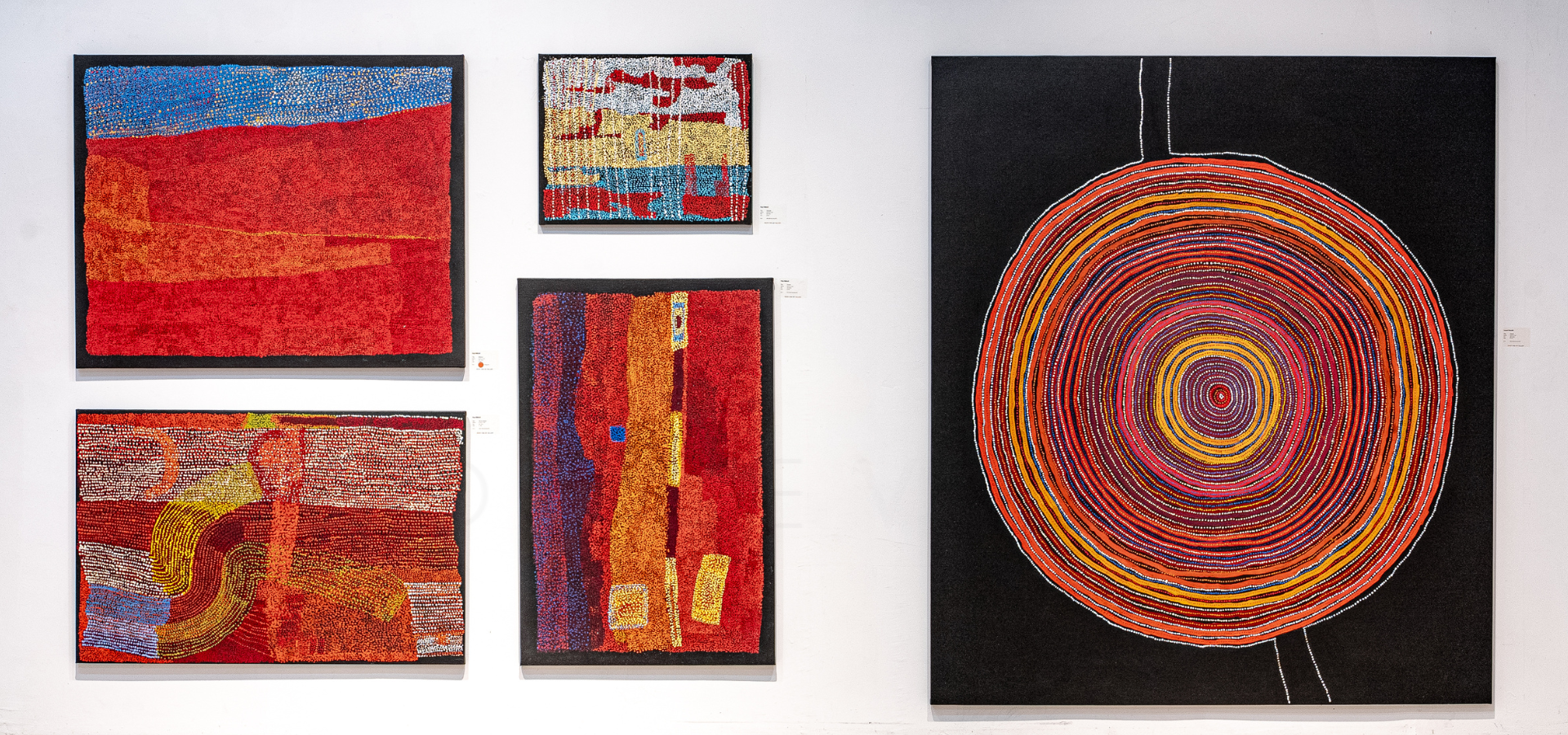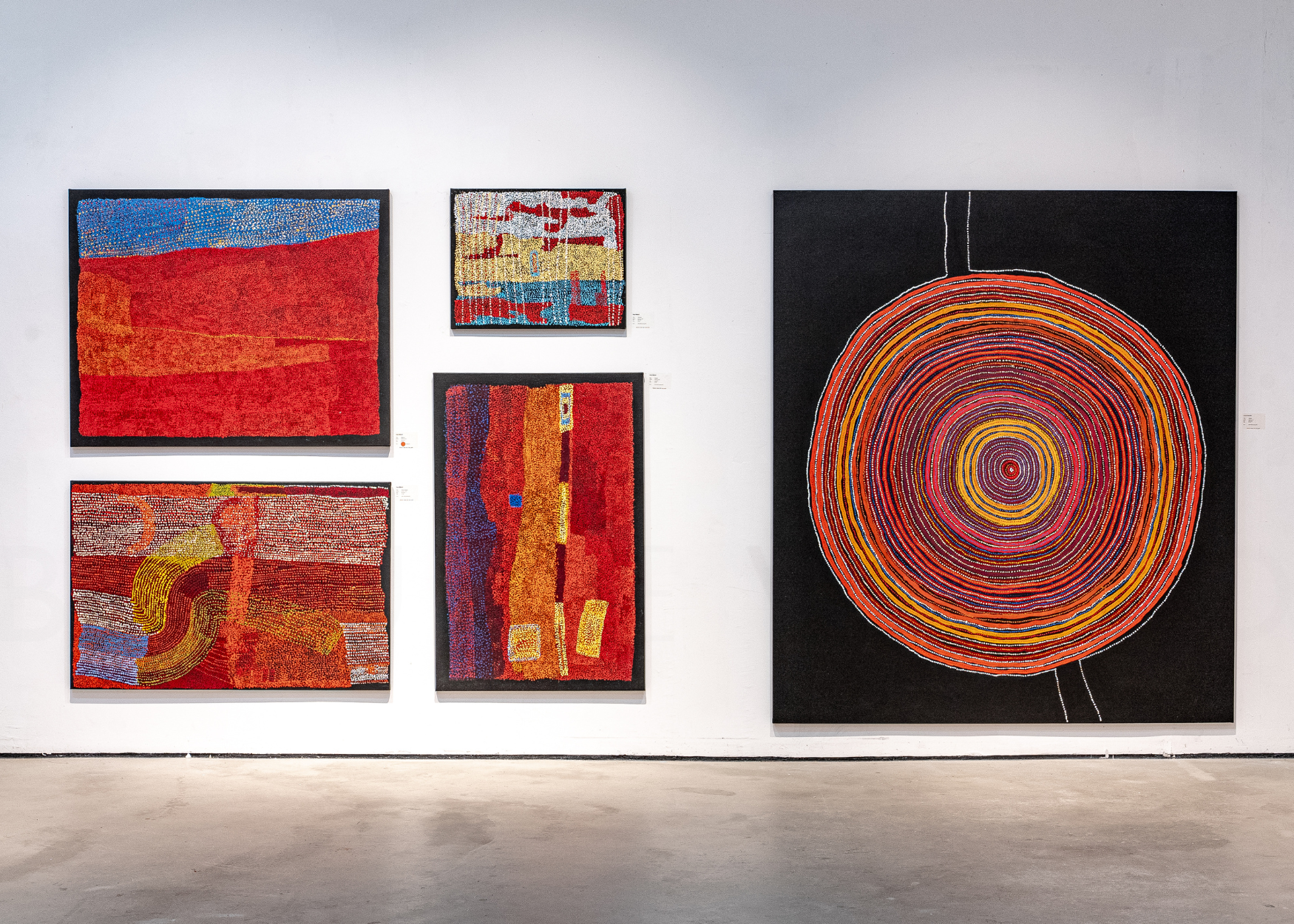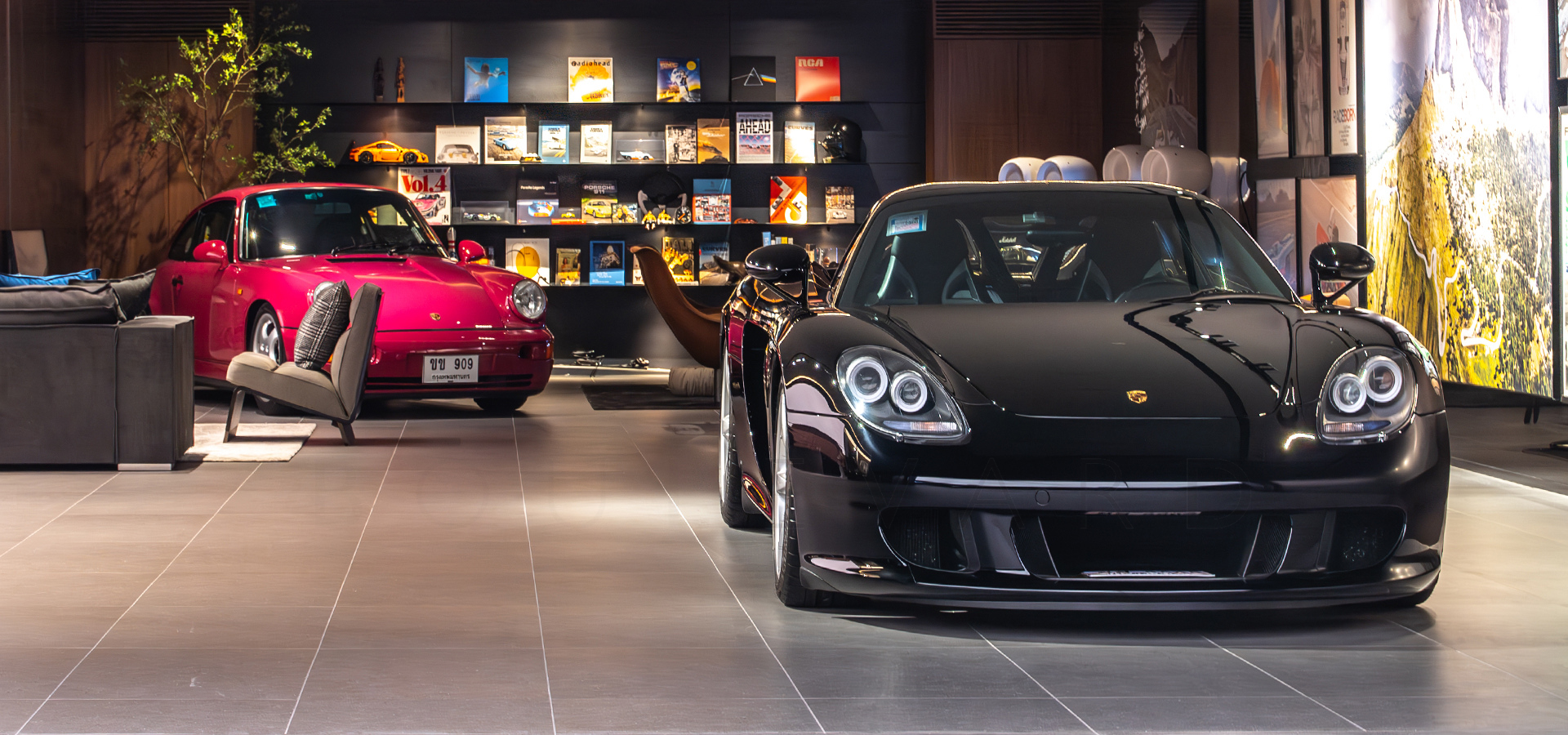The Interview: Giorgio Pilla on collecting indigenous art, how it’s still undervalued, and why he’s expanding to the US
by Karishma Tulsidas
Art has always mirrored the times we live in, a reflection of our societies, politics, and ways of life. For Australian indigenous artists, it’s more than that: every dot, every line, every form carries cultural weight. Their art is a language of land, ancestry and identity, passed down over millennia and expressed not only on canvas, but on rocks, wood carvings, and ceremonial objects. And yet, despite its deep roots, the Indigenous art movement only gained wider recognition in the 1970s.
Giorgio Pilla, founder of ReDot Fine Art Gallery, launched his gallery nearly 20 years ago, at a time when few in Asia had heard of indigenous art. This year, ReDot hosts Rawa Tjunguku – working together a long time, featuring new works from the Spinifex Arts Project. Founded in 1997, the Spinifex project was born out of a need to record and assert cultural identity through artistic expression. It was instrumental in securing a Native Title Claim, using collaborative artworks to demonstrate ancestral connection to land. These paintings became legal proof of ownership, resulting in a historic 2000 ruling that returned 55,000 square kilometres of land to the Spinifex people.
Pilla tells us more about the exhibition, the increasing popularity of aboriginal art, and who the buyers are.
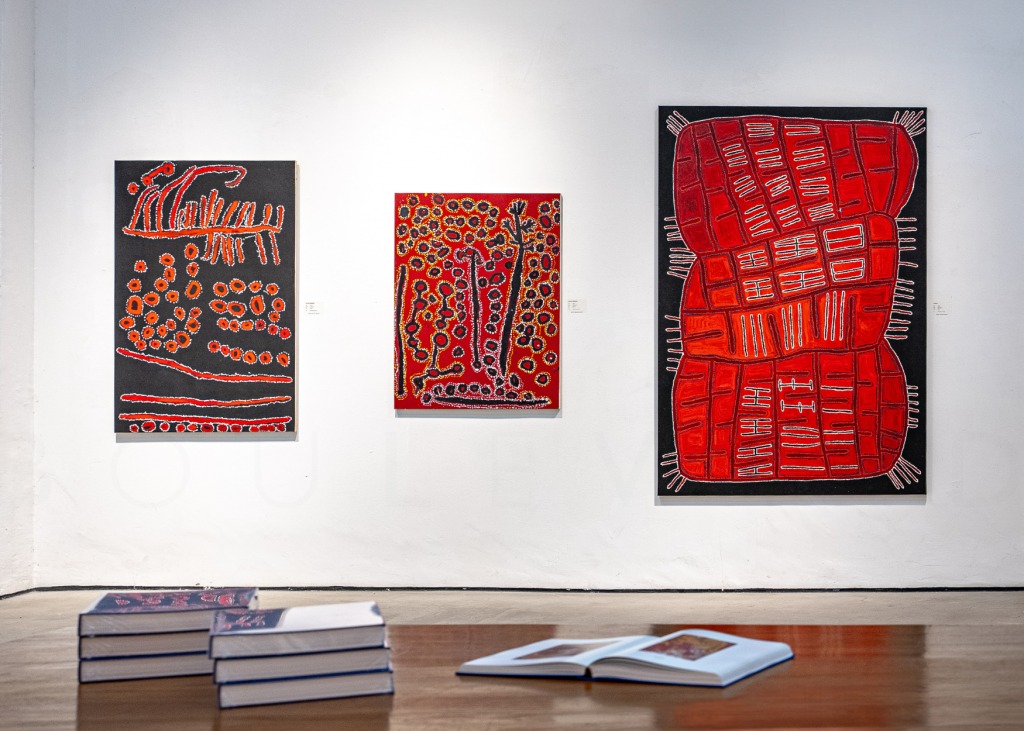
From left to right: Nyuman, 15-155, 2015, acrylic on linen, by Lawrence Pennington; Tuwan, 14073, 2014, acrylic on linen, by Lawrence Pennington; Tuwan, 24-335, 2024, acrylic on linen, by Ian Rictor. Top: Makanya, 23-293, 2023, acrylic on linen; Kuntuwa, 20-208, 2020, acrylic on linen; Minyma Ngiyari, 21-220, 2021, acrylic on linen. Artworks by Patju Presley; Kulyuru, 21-212, 2021, acrylic on linen, by Lennard Walker. Presented by ReDot Fine Art Gallery and Spinifex Arts Project.
Boulevard: Can you tell me a bit more about Indigenous art?
Giorgio Pilla: Australian Indigenous art is made by First Nations people, the original custodians of the land. Australia was colonised by the British in the 18th century, but that land was never ceded. Indigenous people were marginalised—many lost in battles or other ways—and today there’s a relatively small Indigenous population left.
Some live in urban areas, but many still live in the interior—remote communities of 40, 50, maybe 100 people—often with rudimentary infrastructure, but still connected to their ancestral lands.
Since the 1970s, there’s been a modern Indigenous art movement that began around Papunya, with artists using Western materials like acrylics on canvas to document their culture. Traditionally, their art was rock art or body painting, going back thousands of years. But these modern works allow for storytelling in a way that resonates with the contemporary art world.
When I opened the gallery in 2004, I had already spent time in Australia through previous work. I found Indigenous art both anthropologically and artistically fascinating—something that needed a platform. For me, it was always contemporary art, even though others may label it as tribal or traditional.
Later this month, Sotheby’s in New York is including Indigenous art in its Contemporary Day auction. It’s a small step, but awareness is growing. That said, if you asked 100 people, most probably still couldn’t tell you much about it.
Boulevard: Tell us about the latest exhibition, Rawa Tjunguku – working together a long time at ReDot Fine Art Gallery.
Giorgio Pilla: I’ve been running an Indigenous art gallery in Singapore for over 20 years. From the start, the gallery focused on community art centre artists, and artworks from the Australian outback, whether that’s the Northern Territory, Central Desert, the Torres Straits or elsewhere. One of our core community pillars for us, thoughout this time, has been Spinifex Arts from the Tjuntjuntjara area in southern, southwest Australia.
We celebrated our 10th anniversary with and exhibition of Spinifex Arts as the featured art centre, and again for our 21st this year. So, it’s come full circle. The works from that community are quite significant, both in terms of quality and the reputation of the artists, both in Australia and more recently internationally.
Two of the main artists from that recent exhibition, Timo Hogan and Patju Presley, will go from that show into a dual solo exhibition we’re planning in New York in early 2026. They’re not just emerging; they’re already well-established and highly collectible artists. That show in New York will be a follow-on from what we just did in Singapore and hopefully cement a deeper understanding of Indigenous artwork in the Big Apple.
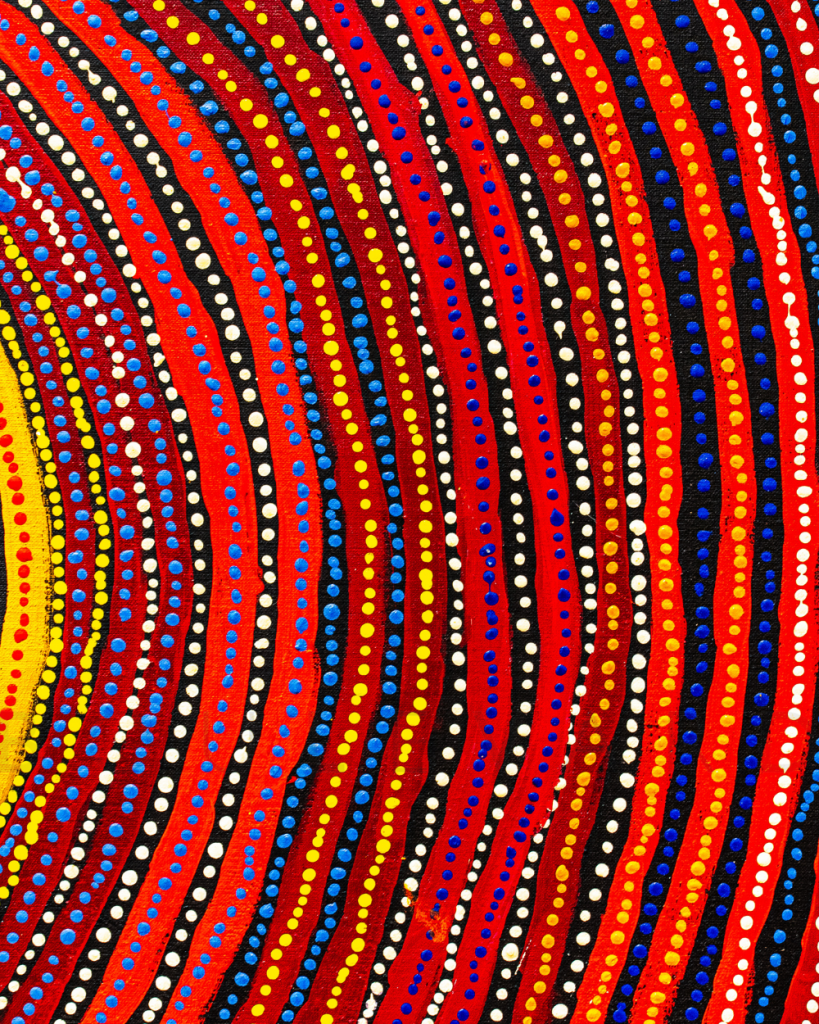
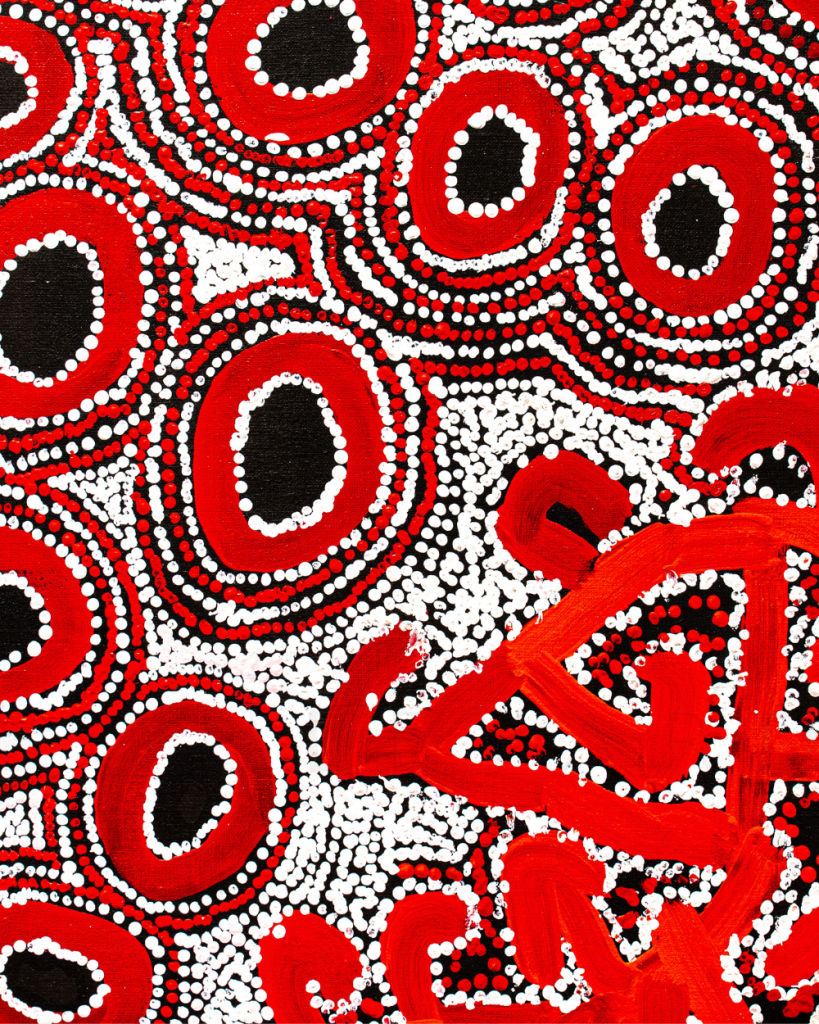
Left: Kulyuru, 21-185, 2021, acrylic on linen, by Lennard Walker. Right: Pila Nguru, 18-400, 2018, acrylic on linen, by various Spinifex artists.
Blvd: Is this your first exhibition in New York?
Pilla: Yes, it’s our first physical show in New York. It’s a solo for Hogan and Presley—predominately black and white works by Timo, colourful pointillism by Patju, really striking pieces which offset each other beautifully, in the first quarter of next year.
We’ve been selling into the US market for many years, but this is about taking that next step—getting the works and hopefully the artists themselves physically in front of collectors.
There’s also a huge Indigenous art show happening later this year in Washington, led by the National Gallery of Australia. Plus, last year there was the Madayin show [which featured a curation of Aboriginal Australian bark paintings] which toured in the US, ending up in NY at the Asian Society. With the Met and other US institutions starting to collect this art form, it just feels like the right time to have boots on the ground and deepen those relationships.
Blvd: Indigenous art is very symbolic—every colour, every dot, every pattern has meaning. Does that impact how it’s received?
Pilla: Absolutely. Each market collects for different reasons.
The beauty of Indigenous art is that there’s something for everyone. You can find figurative work, minimalism, tribal elements, storytelling. And it’s not intimidating “non-inclusive” in the way that some contemporary Western art can be. Take something like a banana taped to a wall—it’s conceptually interesting, sure, but can be alienating to someone who doesn’t have a deep understanding of art or a grasp of the concepts at play. Indigenous art, by contrast, is inherently connected to culture and story, and people can engage with that emotionally and relatively easily.
In New York, for example, the art scene is heavily influenced by minimalism and abstraction, Warhol, Kandinsky, and so on. Some Indigenous art fits that aesthetic beautifully since it’s minimalist and visually compelling, hence the huge success of Papunya Tula artists Yukultji and Warlimpirringa.
In France, the appreciation leans more toward the tribal—Europe has a longer relationship with tribal art. So, they focus more on the symbolism, storytelling, the spiritual connection.
Simon Hogan, who is part of the Singapore show, is in his 90s. He was born before official records and lived nomadically with no contact with white people for a long time. Yet his works resemble Kandinsky’s—large colour fields, abstract beauty—but he has had minimal to no exposure to Western art history. He paints from memory, from tradition, from stories, not from textbooks or museums.
That’s what makes it powerful. You’re not just buying a beautiful artwork. You’re buying into a worldview. And when collectors meet these artists, they’re often struck by how different and yet how present they are—living today with wisdom and traditions thousands of years old.
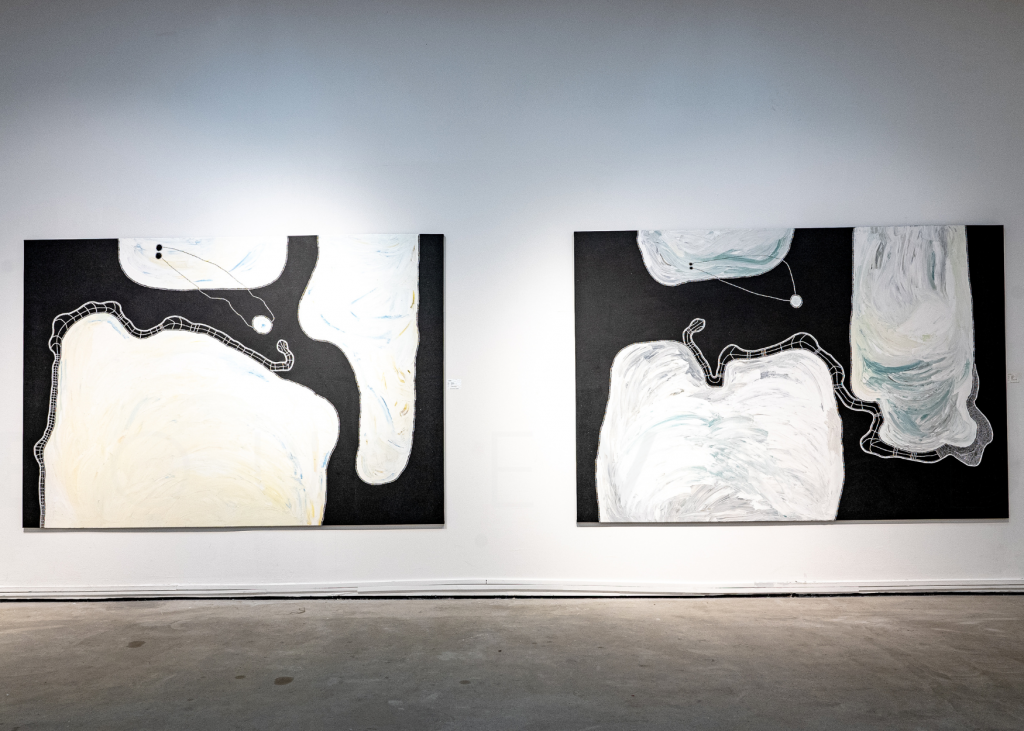
Left: Lake Baker, 23-350, 2023, acrylic on linen. Right: Lake Baker, 24-276, 2024, acrylic on linen. Artworks by Timo Hogan.
Blvd: Can you tell us more about the collector profile of Indigenous art buyers?
Pilla: The gallery started in 2004, and the initial market was mostly expats in Singapore—Australians, Brits, French. Back then, expats had higher salaries, big houses, and more disposable income. So, the early work we sold was priced to appeal to that demographic.
Over the years, as the gallery and our profile grew, the price points increrased. That naturally reduced the number of casual buyers and attracted more serious collectors. Thanks to the internet, even international collectors can now find us. Twenty-five years ago, that wasn’t the case. We now have clients in every continent checking in with us regularly, the collector goes to the art, if the art is important enough, not the other way round.
Blvd: Are collectors coming to Indigenous art from a general interest in contemporary art, or are they typically specialists who focus only on this category?
Pilla: Historically, most collectors who bought Indigenous art, in our experience, focused solely on that subcategory. But in the last 5 to 10 years, it’s becoming part of broader contemporary collections. And that shift is significant. As awareness grows, prices will continue to rise. Many works are still massively undervalued and breakout artists are a handful at the moment.
Take Rover Thomas, for example. In the ’80s, he was selling works for $5,000–$10,000. Today, his works go for hundreds of thousands. He once saw a Rothko at the Met and thought the artist had copied him—not realising Rothko predated him. But the aesthetic was similar. And yet Rothko’s work is worth tens of millions, while Rover’s is still comparatively cheap.
Blvd: What advice do you give to collectors?
Pilla: Buy with your eyes, not your ears. Buy with your heart, not your wallet. If you love something, you’ve already won. If it turns into an investment, great. And if you want to improve your odds, always go for best-of-breed—buy from top galleries and artists with reputations.
Go further with ReDot Fine Art Gallery and visit the virtual exhibition of Rawa Tjunguku – working together a long time
Read next:
